The Economics and Statistics Division maintains archives of previous publications for accountability purposes, but makes no updates to keep these documents current with the latest data revisions from Statistics Canada. As a result, information in older documents may not be accurate. Please exercise caution when referring to older documents. For the latest information and historical data, please contact the individual listed to the right.
<--- Return to Archive
For additional information relating to this article, please contact:
February 13, 2020NOVA SCOTIA POPULATION ESTIMATES BY COUNTY AND CENSUS SUBDIVISION - JULY 1, 2019 Statistics Canada has released estimates of the population by county as of July 1, 2019. Provincial population estimates for July 1, 2019 were released on September 30, 2019 and updated to October 1, 2019 on December 19, 2019. These population estimates should not be confused with Census counts. Estimates of the population adjust for net undercoverage from the Census as well as incompletely enumerated Indian reserves. The current estimates are based on the results of the 2016 Census of the population and data back to 2006 have been revised.
In Nova Scotia, 9 of the 18 counties had population growth from July 1, 2018 to June 30, 2019. Halifax had the fastest growth at 2.26 per cent, followed by Cape Breton at 1.58 per cent and Annapolis at 0.97 per cent. There was also population growth in Yarmouth, Lunenburg, Kings, Hants, Colchester and Antigonish counties. Population decline was the fastest in Guysborough county (-1.46 per cent), followed by Shelburne, Queens, Victoria, Cumberland, Digby, Inverness, Pictou, and Richmond.
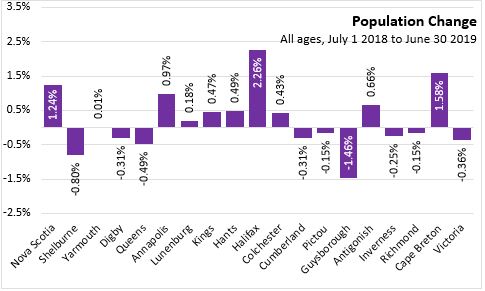

Halifax's population has risen to 440,332 or 45.3 per cent of the provincial population. Cape Breton county's population was 101,264 as of July 1st 2019 and had 10.4 per cent of the provincial population. The other three counties on Cape Breton Island (Inverness, Richmond and Victoria) accounted for 3.5 per cent of the provincial population (33,586). Counties in the North Shore economic region (Colchester, Cumberland, Pictou, Guysborough, and Antigonish) had a population of 153,287 or 15.8 per cent of the provincial total. Counties in the Annapolis Valley (Annapolis, Kings and Hants) had 128,187 residents or 13.2 per cent of Nova Scotia's population. The counties of Southern Nova Scotia (Shelburne, Yarmouth, Digby, Queens and Lunenburg) had a population of 114,739 or 11.8 per cent of the provincial total.

Nova Scotia's population growth has accelerated in the last four years. Much of this growth has been attributable to ongoing increases in the population of Halifax, Kings and Hants counties. Population has recently rebounded in population observed in Yarmouth, Annapolis, Lunenburg, Colchester, Antigonish and Cape Breton counties. The pace of population decline has slowed in Shelburne, Digby, Cumberland, Pictou, Inverness, Richmond and Victoria counties.

Note: scales for all counties are set to 7,000 except Cape Breton (21,000) and Halifax (140,000).
Components of county population change
Population estimates for counties change from one year to the next based on natural change (births, deaths), international migration (immigration, emigration, non-permanent residents), interprovincial migration (from one province to another) and intraprovincial migration (from one county of the province to another).
All counties except Halifax reported more deaths than births between July 1, 2018 and June 30, 2019. The natural population decline was largest in Cape Breton and smallest in Hants county. Halifax had a natural increase of 754.
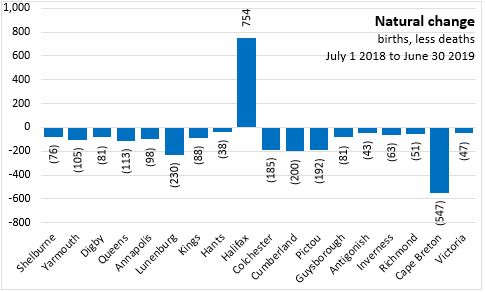
Immigration has contributed to the recent acceleration of Nova Scotia's population growth. Immigration was concentrated in Halifax with 5,361 immigrants added to the population. The next highest numbers of immigrants added were in Cape Breton and Kings counties.
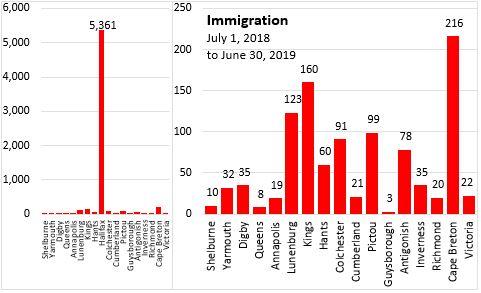
Unlike in previous years, net changes in the number of non-permanent residents were concentrated Cape Breton (+2,249) rather than in Halifax with (+1,481).
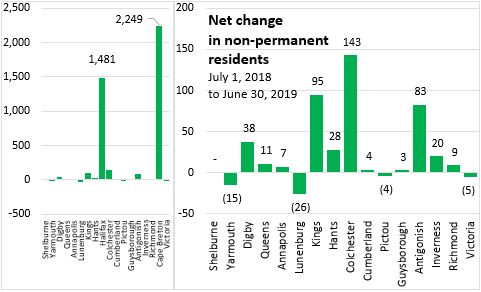
Overall international migration (including immigration, net non-permanent residents and emigration) contributed to population growth in every county except Shelburne. International migration was concentrated in Halifax and Cape Breton, though Kings, Colchester and Antigonish counties also had large contributions to population growth from international sources.
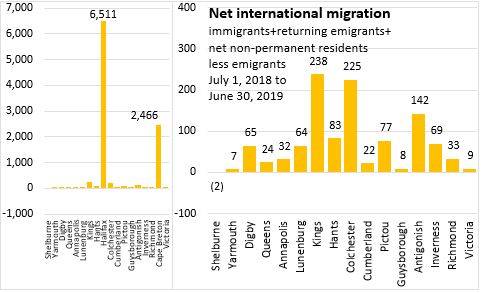
Interprovincial migration was also concentrated in Halifax with a net gain of 1,590 persons from other provinces. All counties except Cape Breton reported positive interprovincial migration in the last year.

Net movements within the province have contributed to population increases in Halifax, Colchester, Hants and Annapolis counties. All other counties had net negative migration with the rest of the province.

Age cohorts
With recent population growth based on international and interprovincial migration, the number of children (aged 0-14) increased in several counties, led by Annapolis, Halifax, Queens and Digby counties. The population of children aged 0 to 14 years increased by 0.9 per cent for the province as a whole. The share of population under the age of 14 is highest in Hants, Antigonish, Colchester and Halifax counties.
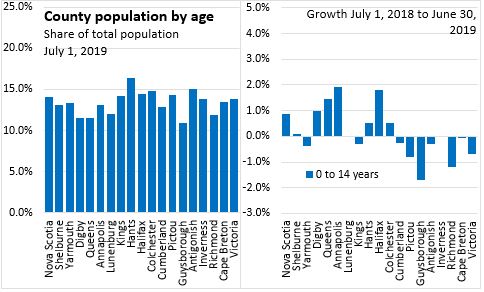
Populations aged 15 to 39 are declining in many counties, with notable exceptions in Cape Breton, Halifax and Annapolis counties. With growth in populations aged 15 to 39 in larger counties, Nova Scotia's overall population aged 15 to 39 is rising (+2.2 per cent). The steepest declines in population aged 15 ot 39 were reported in Guysborough, Queens and Shelburne counties. The counties with the highest share of the population aged between 15 and 39 were Halifax, Kings, Antigonish and Cape Breton counties.
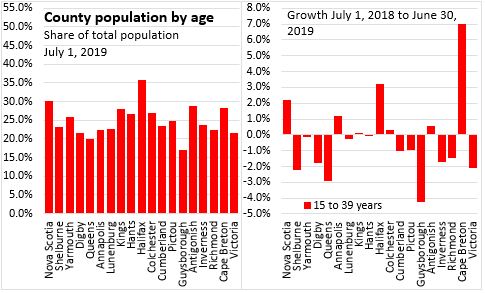
The population aged 40 to 64 is declining in every county except Halifax. The overall growth rate of population aged 40 to 64 was -0.6 per cent. This is the cohort from which large numbers of the baby boom are now aging past 65 years old. The share of 40 to 64 year olds in the population is relatively consistent across the province, but slightly higher in Queens, Digby, Shelburne and Guysborough counties.
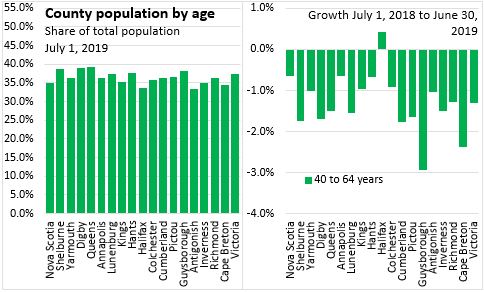
The population over the age of 65 is rising in every county (+3.4 per cent for the province as a whole) as the baby boom continues to reach this age threshold. The fastest growing populations aged 65 and over are in Halifax, Antigonish, Kings and Hants counties. The highest share of populations over 65 are found in Guysborough, Richmond and Queens counties. The lowest shares of residents over age 65 are in Halifax and Hants counties.
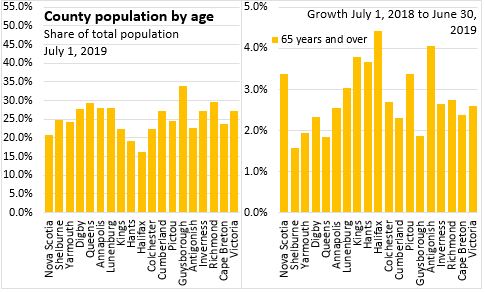
Between July 1, 2018 and July 1, 2019 Nova Scotia's median age declined for the first time since the 1960s, falling to 44.9 years. Declining median age was observed only in Halifax and Cape Breton counties, while median age rose in all other counties. Halifax has the lowest median age at 39.8 years while the highest median age was observed in Guysborough county at 57.5 years.

Cities
Population growth was faster in urban areas from July 1, 2018 to July 1, 2019. Halifax's population growth of 2.26 per cent was fourth fastest among Canada's other Census Metropolitan Areas (CMA).
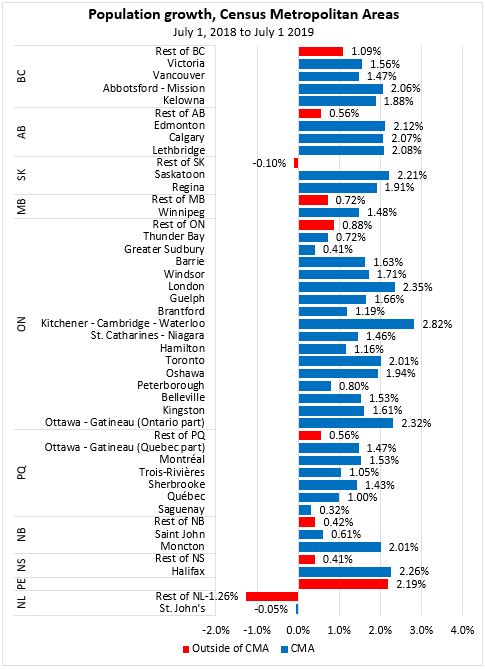
Census Subdivisions
With release of July 1, 2019 population estimates, Statistics Canada has now made population estimates available for Census Subdivisions as well as Census Divisions (counties). Census subdivisions are towns, municipal districts, regional municipalities, Indian reserves and rural areas (identified as Subdivisions A, B, C, or D in their counties). A map of Nova Scotia's census subdivisions can be found here: Standard Geographical Classification, census division – census subdivision maps, Nova Scotia (PDF version, 4369.7 KB)
Note: all county scales are set to a range of 7,000 (except Halifax and Cape Breton). All census subdivision scales are set to a range of 1,500 (except Halifax Regional Municipality and Cape Breton Regional Municipality).
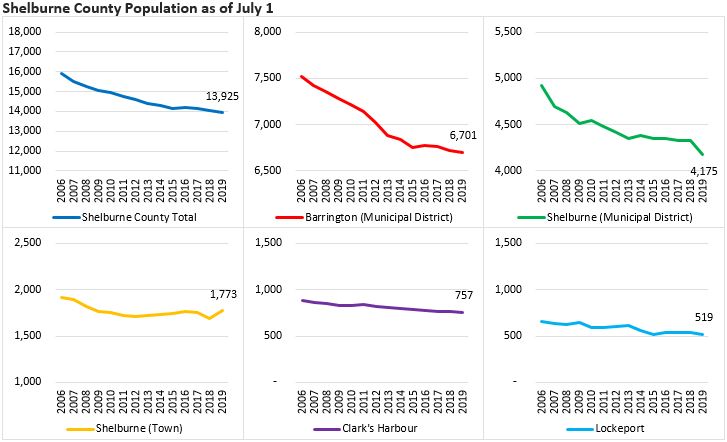
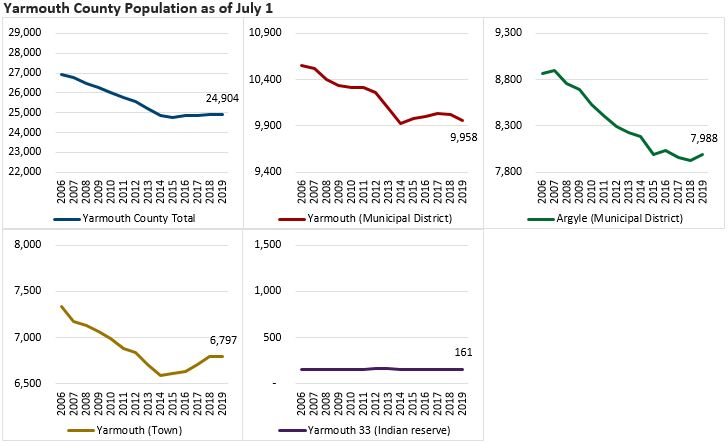
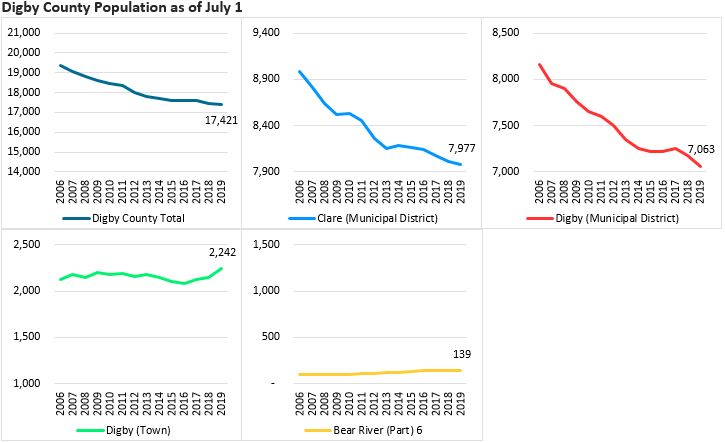
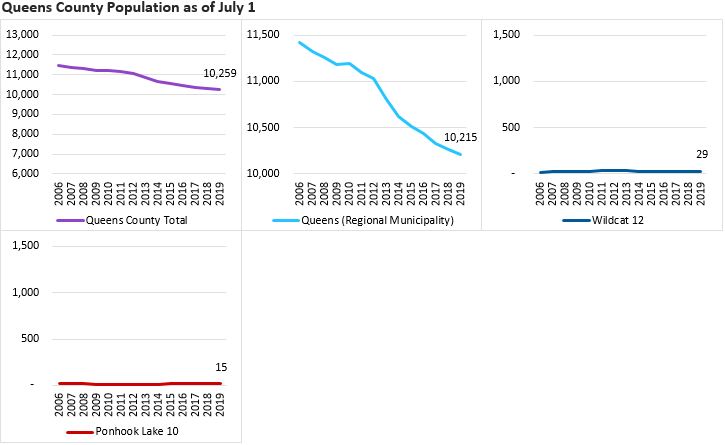
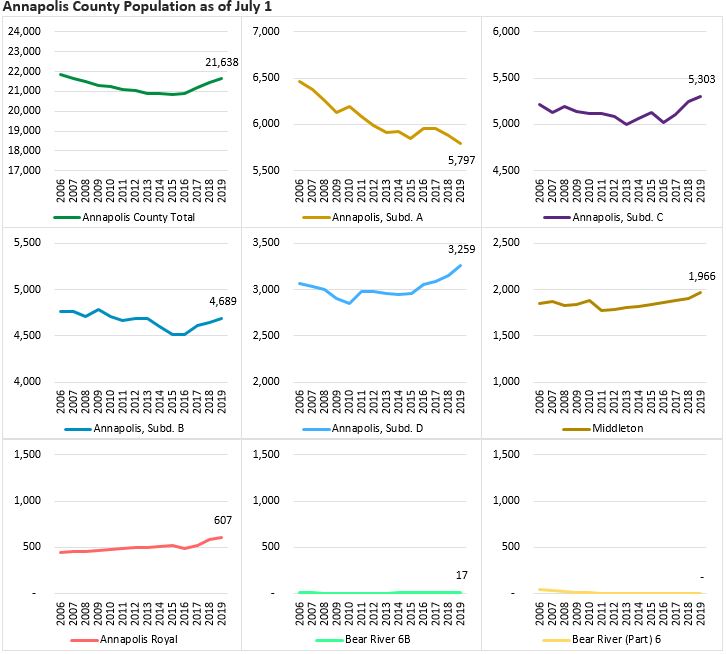

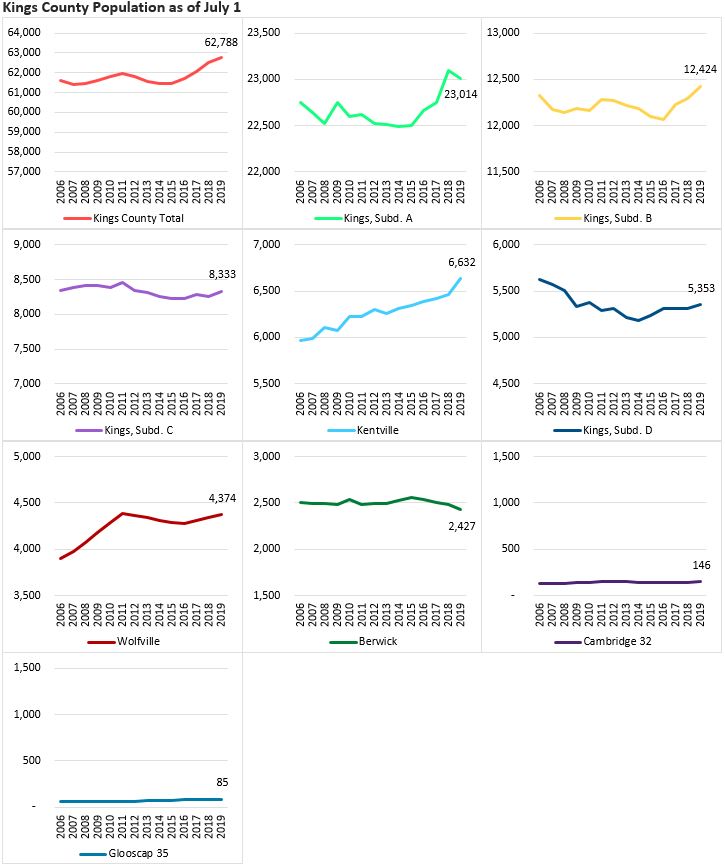

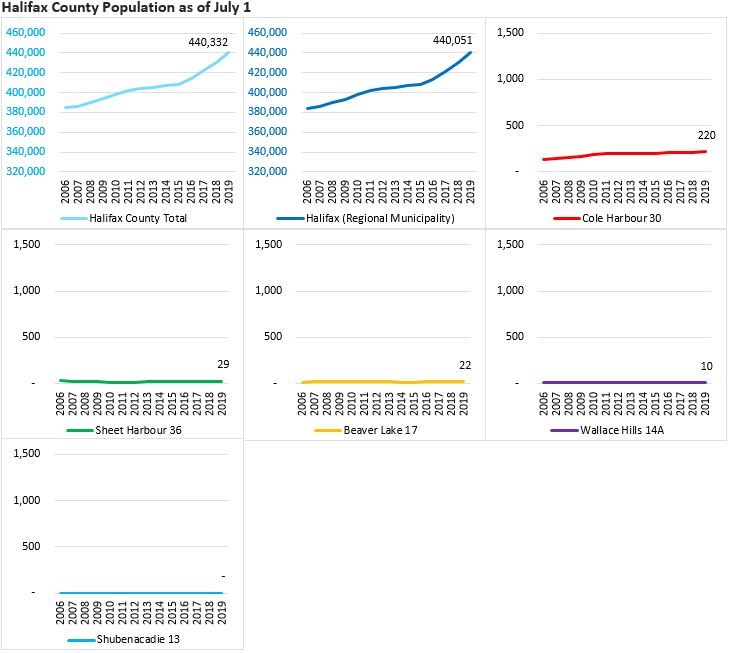
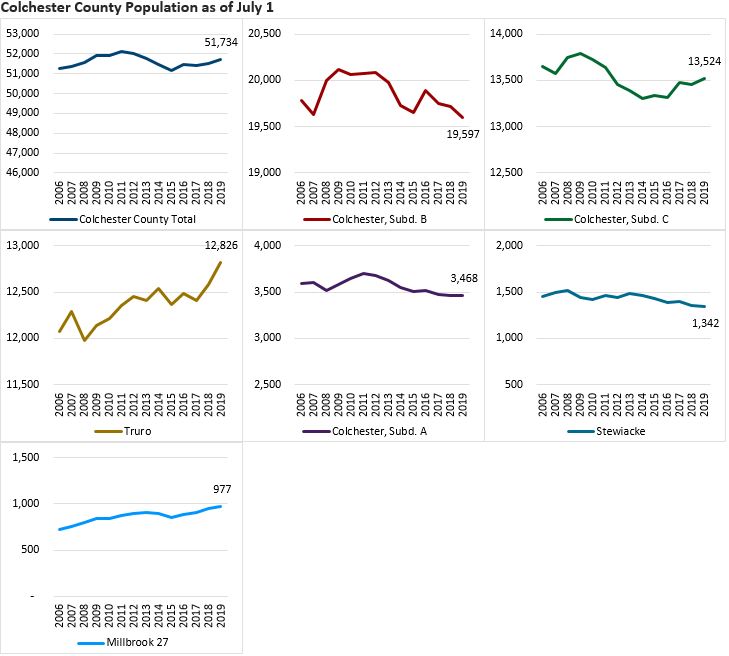

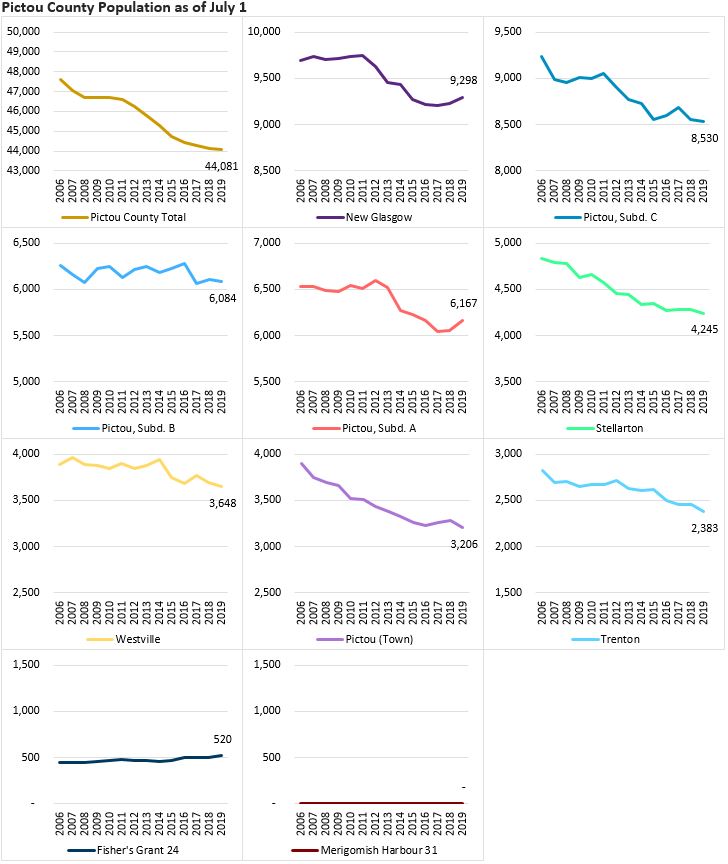
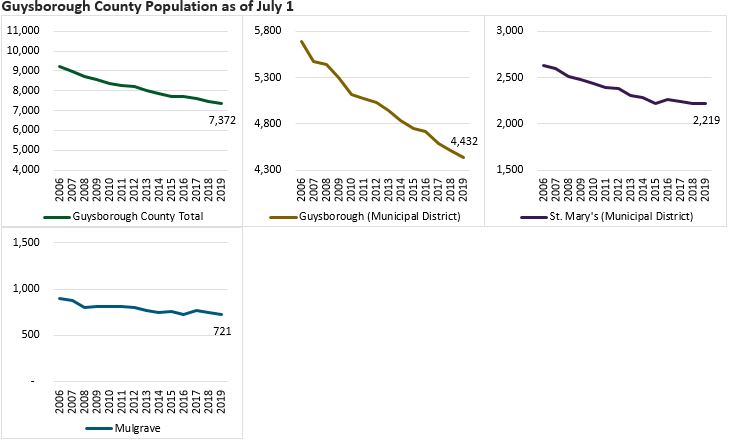
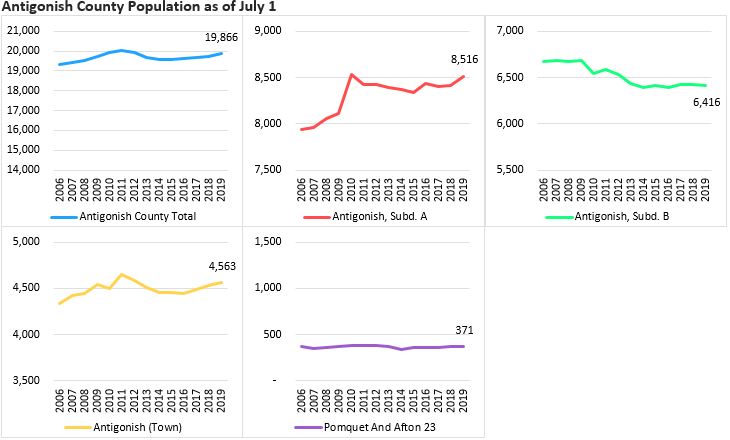
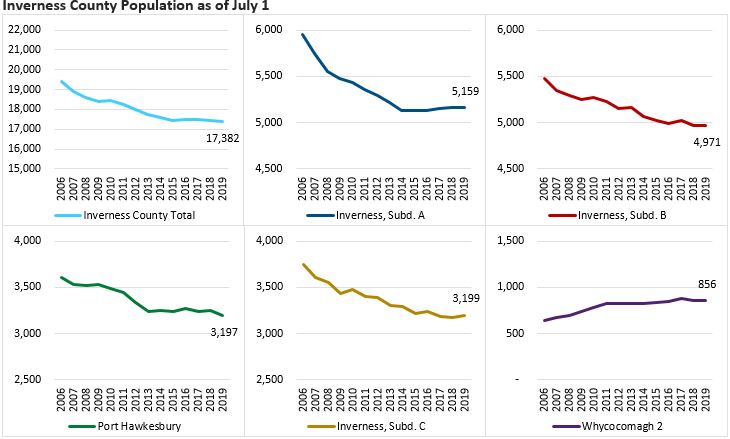
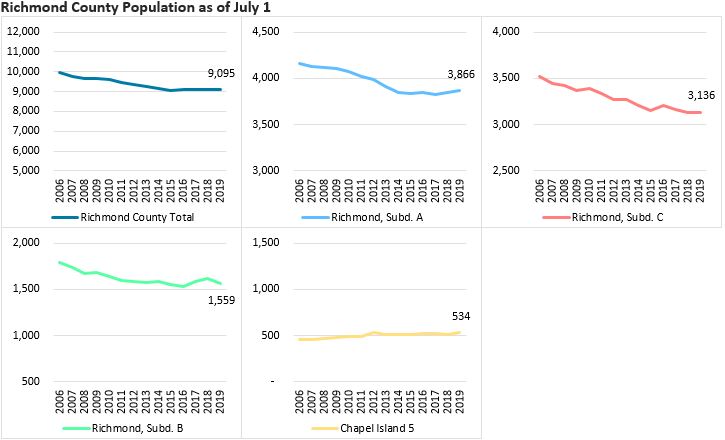
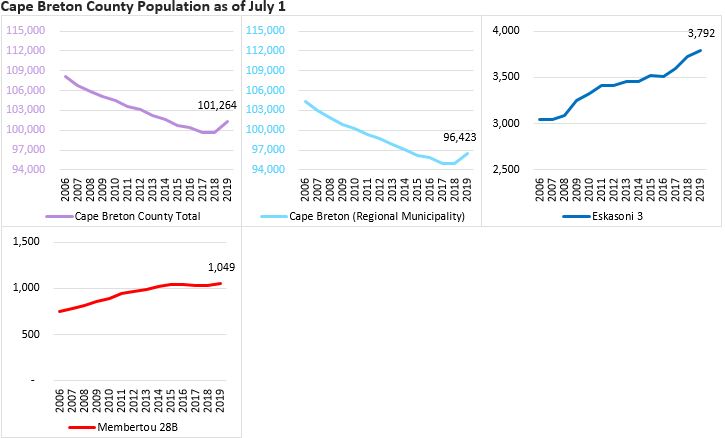

Sources: Statistics Canada. Table 17-10-0135-01 Population estimates, July 1, by census metropolitan area and census agglomeration, 2016 boundaries; Table 17-10-0139-01 Population estimates, July 1, by census division, 2016 boundaries; Table 17-10-0140-01 Components of population change by census division, 2016 boundaries; Table 17-10-0142-01 Population estimates, July 1, by census subdivision, 2016 boundaries; Standard Geographical Classification, census division – census subdivision maps, Nova Scotia (PDF version, 4369.7 KB)
<--- Return to Archive